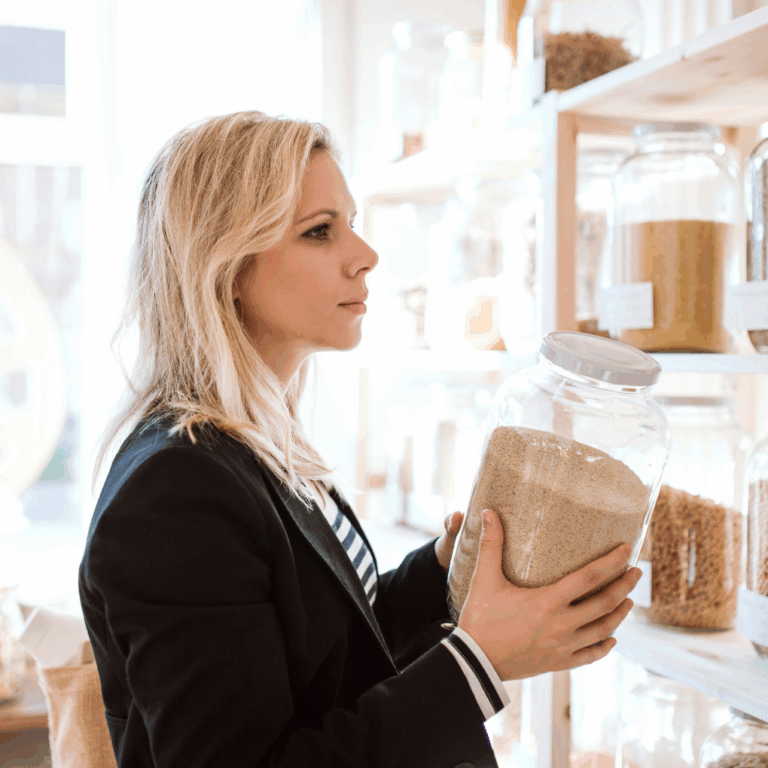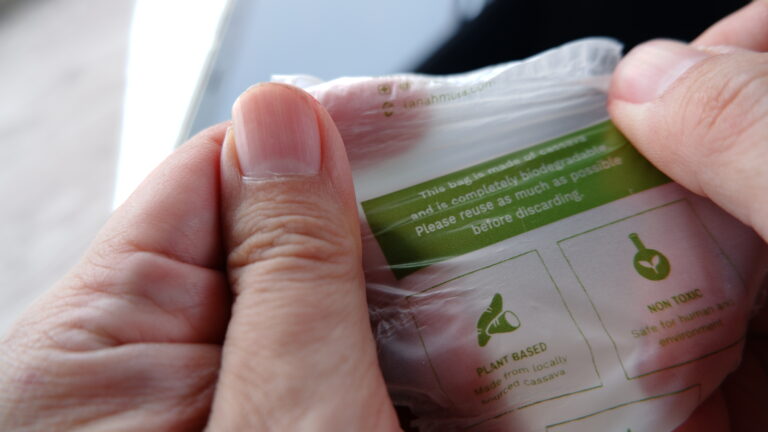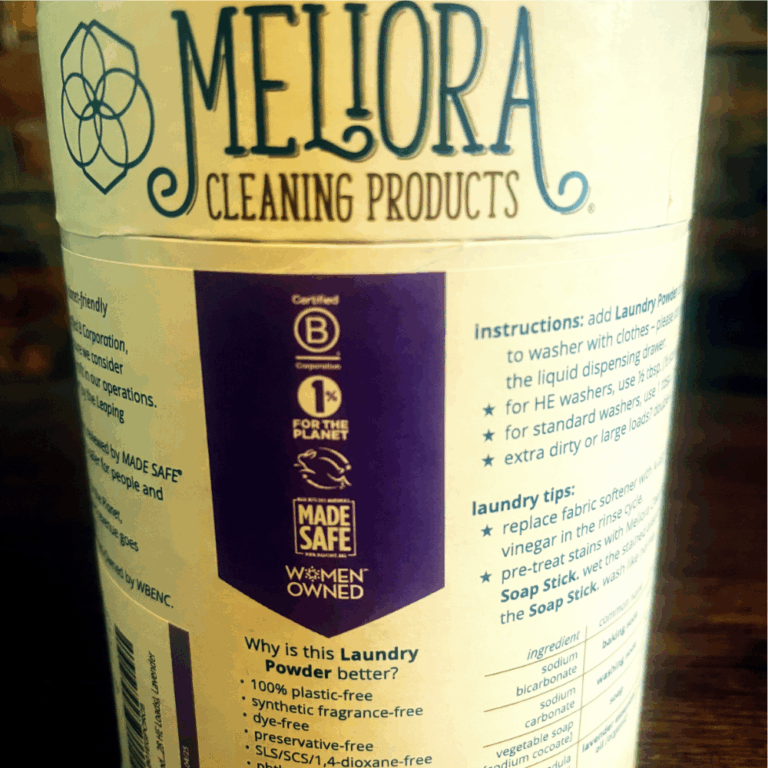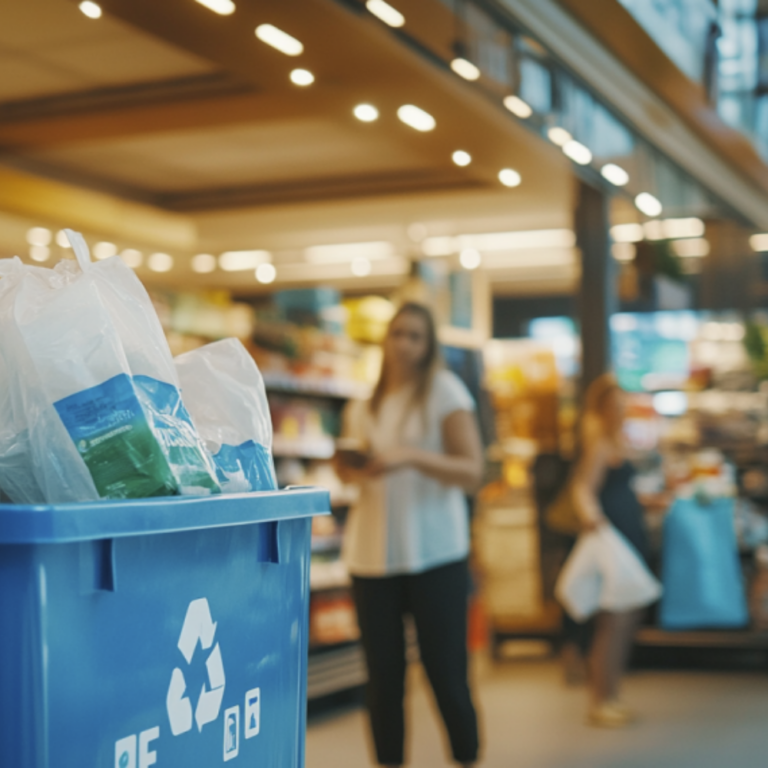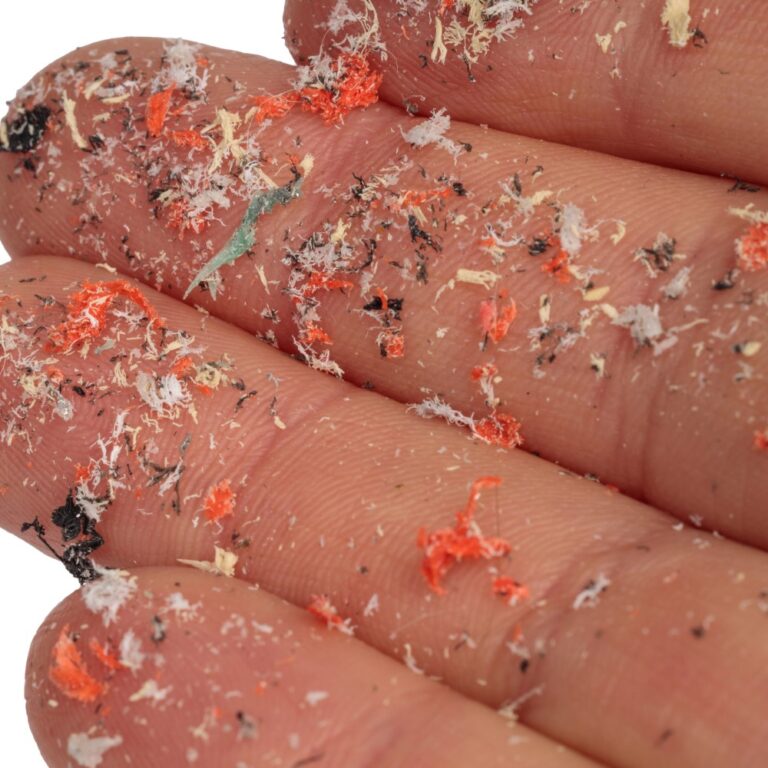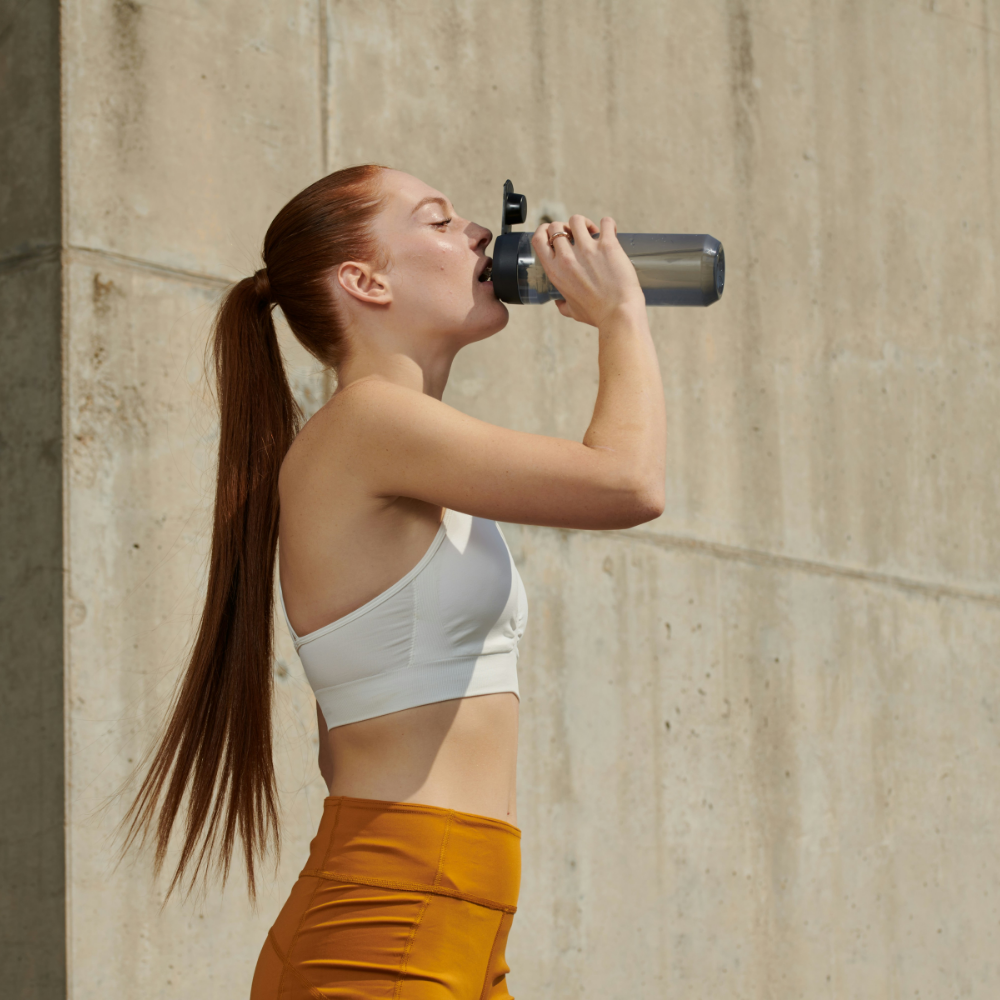
Key Takeaways
- What is Tritan material: a BPA-free plastic that is durable, shatter-resistant, and crystal clear.
- Tritan is promoted as safer than polycarbonate, but research on potential health risks is ongoing.
- Although reusable and longer-lasting, Tritan is still petroleum-based and not biodegradable.
You might have noticed the word “Tritan™” on water bottles, baby cups, or food containers and wondered what makes it different from other plastics. Tritan is advertised as BPA-free, super strong, and as clear as glass, which is why so many companies use it instead of older plastics like polycarbonate.
But what exactly is Tritan made from? And is it really as safe and eco-friendly as it sounds? In this guide, we’ll explain how Tritan is made, why it’s so popular, some of the health and environmental questions people have about it, and what you should know if you want to cut down on plastic in your life.
What Is Tritan Material?
Tritan is a type of plastic made by Eastman Chemical Company. It’s part of a group called copolyesters, which are known for being strong, clear, and resistant to odors and stains. If you’ve ever used a reusable water bottle that looks like glass but doesn’t shatter when you drop it, there’s a good chance it was made from Tritan.
One of the biggest selling points is that it’s BPA-free. Due to health concerns, Tritan doesn’t contain bisphenol A (BPA), BPS, or similar chemicals that many people try to avoid. That’s a big reason it became popular in products for kids and the kitchen.
Eastman also offers a version called Tritan Renew, which includes a percentage of recycled plastic. It’s marketed as a more sustainable option, but it’s still made of plastic—just with some reused materials.
So, while Tritan is designed to be more durable and safer than older plastics, it’s not a perfect material. It doesn’t break as easily, stays clear over time, and won’t hold onto smells or stains. But at the end of the day, it’s still a plastic product, just one engineered to check more of the right boxes.
How Tritan Is Made: Manufacturing and Chemical Composition
Tritan is a copolyester plastic developed by Eastman Chemical Company. It is engineered to offer high durability, clarity, and chemical resistance without relying on bisphenol A (BPA) or similar compounds. Its defining trait is that it’s a BPA-free copolyester material designed to perform like traditional plastics but with a safer chemical profile.
Tritan is made through copolymerization, where different plastic building blocks—like diacids and glycols—are combined to create a rigid, glass-like material that’s flexible, impact-resistant, and built to last. Eastman keeps the exact formulation proprietary, but one of Tritan’s key selling points is that its monomer mix avoids BPA and BPS altogether. This chemical structure helps reduce the potential for estrogenic or androgenic activity, which is often a concern with older polycarbonate plastics.
The production process also allows Eastman to control properties like odor resistance, heat stability, and stain resistance—making Tritan a popular choice for food-contact items and reusable consumer goods. It’s manufactured under strict quality control, and Eastman supplies safety data and third-party testing to support its use in regulated applications.
So, while Tritan is still a synthetic material, it’s a carefully engineered copolyester designed to perform well and raise fewer red flags than other plastics in the same category.
Where You’ll Find It: Applications and Everyday Uses

Tritan’s popularity comes from its ability to combine durability, optical clarity, and chemical resistance—all in a lightweight material that won’t shatter. That’s why it is used in a wide range of consumer and professional products.
🥤In the kitchen and on the go
Tritan is commonly used in water bottles, mugs, food storage containers, and drinkware that must be durable and dishwasher-safe. It resists odors and stains, making it ideal for items that hold coffee, juice, or leftover meals.
☕️Coffee and tea gear
More specialty brewers are using Tritan to balance strength and visibility. You’ll find it in the Aeropress Clear, Tricolate, OXO pour-over brewers, and Timemore brewers. Its glass-like appearance makes it a favorite for minimalist, modern coffee setups, without the risk of breaking.
🍼Baby and kid products
Tritan’s BPA-free profile makes it a common choice for baby bottles, sippy cups, and snack containers. Parents gravitate toward it because it’s tough enough for drops and safe for daily use.
🏥Medical and professional use
In more regulated settings, Tritan is used in medical devices, where its resistance to heat and harsh cleaners is critical. It’s also found in office supplies and clear kitchenware, where clarity and strength are essential for frequent handling.
Manufacturers choose Tritan when they need a material that performs like glass or polycarbonate but avoids some chemical concerns. Its combination of safety claims, impact resistance, and crystal-clear appearance has made it a staple in everyday and specialty products.
Durability and Performance Features
One of the main reasons Tritan has become so popular is because it’s built to last. It’s often described as having glass-like clarity but without the risk of breaking when dropped. That makes it a go-to choice for anything strong and see-through.
Tritan is shatter-resistant, holds up well to everyday bumps and drops, and doesn’t crack under pressure the way some plastics can (a problem called stress cracking). It also resists stains and odors, which is especially helpful for food containers, tea infusers, and drinkware.
It’s designed to handle repeated runs through the dishwasher without getting cloudy or brittle over time. It’s also more heat-resistant than some other plastics, though there are still temperature limits—so it’s best not to use it in the microwave, even if the label says it’s technically safe.
Tritan Renew, the recycled version, is made to perform just as well, so you’re not trading strength for sustainability. Whether dealing with hot coffee, acidic juice, or just the wear and tear of daily use, Tritan is built to keep its shape, clarity, and performance.
Is Tritan Plastic Safe for Everyday Use?
chemicals that have raised concerns about hormone disruption. That’s a big part of why it’s become a go-Tritan is marketed as a safer alternative to traditional plastics because it does not contain BPA, BPS, or phthalate chemicals that have raised concerns about hormone disruption. That’s one reason it has become a go-to material for water bottles, baby products, and food containers. But just because something is labeled BPA-free doesn’t automatically mean it’s risk-free.
Eastman, the company behind Tritan, reports that accredited third-party labs have tested the material and found no evidence of estrogenic or androgenic activity (hormone-mimicking effects). These studies are often cited to support its use in everyday food-contact products.
Regulatory agencies have also reviewed Tritan and its base monomers:
- The U.S. FDA has approved Tritan for repeated-use food-contact applications.
- Health Canada issued a favorable opinion for its use in food packaging and containers.
- The European Food Safety Authority (EFSA) evaluated one of Tritan’s key ingredients and rated it safe for food-contact use.
In everyday conditions, Tritan is considered heat-resistant and dishwasher-safe. However, like any plastic, scratches, repeated use, and high heat can affect its stability. While there is no confirmed evidence of harmful chemical leaching, most of the long-term safety data comes from Eastman’s studies, and independent research remains limited.
If your goal is to minimize exposure to hormone-disrupting chemicals and microplastics, Tritan may be a safer choice than older plastics; however, it is still a plastic, and how you use and care for it makes a significant difference.
Alternatives to Tritan
Tritan may be durable and BPA-free, but it’s still a synthetic plastic. If you’re trying to reduce microplastic exposure or choose lower-impact options, here are some common alternatives to consider:
- Glass (tempered or borosilicate) — Non-toxic, fully recyclable, and free from microplastics. Excellent clarity and stain resistance, though heavier and breakable. Best for home use.
- Stainless Steel — Lightweight, durable, and endlessly recyclable. Won’t leach chemicals or absorb flavors. Although not transparent, it is one of the most sustainable and long-lasting choices.
- Silicone (food- or medical-grade) — Flexible, heat-resistant, and reusable. Great for bags and lids, but lacks the rigid, glass-like look and is not widely recyclable.
- Polycarbonate plastics are strong and clear, but they often contain BPA. Tritan was created as a replacement for polycarbonate; older items made from this plastic are best avoided.
Sustainability and Environmental Impact
Tritan is often marketed as a more sustainable plastic, but the reality is mixed. It’s stronger and more reusable than single-use plastics, yet it’s still petroleum-based and not biodegradable. Most Tritan products aren’t accepted in curbside recycling, and Eastman hasn’t created a broad recycling pathway for standard Tritan.
Eastman’s newer Tritan Renew includes up to 50% recycled content through molecular recycling — a positive step, though it doesn’t solve the larger issue: like all plastics, Tritan can shed microplastics over time from dishwashing, UV exposure, or abrasion.
Compared to disposable plastics, Tritan lasts longer. But when weighed against materials like glass or stainless steel, its environmental footprint is still significant. If your goal is to reduce plastic use, Tritan may be a “better plastic,” but it’s not the most sustainable choice.
Care and Maintenance
Caring for Tritan properly extends its usable life and keeps it looking clear. Most products are dishwasher safe, but handwashing with mild soap and warm water is the gentlest option, especially for bottles and food containers.
- Avoid abrasive scrubbers, harsh detergents, or bleach, as they can scratch and weaken the plastic.
- For odors or stains, soak with a mix of baking soda and warm water.
- Always check the manufacturer’s guidelines for special parts like microwave-safe lids or silicone seals.
- Watch for signs of wear, cloudiness, cracks, or changes in texture which signal it’s time to replace.
- Towel drying instead of air drying helps prevent watermarks.
With proper care, Tritan can last for years, but like all plastics, it isn’t indestructible. The goal is to maximize reuse and delay disposal for as long as possible.
FAQs About Tritan Plastic
Tritan is a BPA-free copolyester plastic made by Eastman, known for being durable, impact-resistant, and clear. It was developed as a safer alternative to polycarbonate plastics.
Tritan is marketed as food-safe and free of BPA, BPS, and phthalates. However, some independent studies raise concerns about other potential chemical leaching, so its long-term safety is still debated.
Tritan is lighter and shatter-resistant, but unlike glass or stainless steel, it’s still petroleum-based and not biodegradable. If your priority is reducing plastic use, glass and steel are the more sustainable options.
Tritan is not widely accepted in curbside recycling programs, which means most items end up in landfills once they’re worn out. Eastman does offer a version called Tritan Renew, made with up to 50% recycled content, but that doesn’t guarantee recyclability for the products you buy.
Yes. Like all plastics, Tritan can shed microplastics (polymer fragments) over time, especially with repeated dishwashing, sunlight exposure, or abrasion. While it’s tougher than many plastics, it’s not immune. To reduce shedding, handwash gently, avoid harsh scrubbers, and replace items that show cracks or cloudiness.
Final Thoughts on What is Tritan Material
Tritan is often marketed as the “better plastic” due to its clear, tough properties and is free from chemicals like BPA and BPS. And compared to older plastics, it does offer some improvements. It doesn’t crack as easily, it withstands the dishwasher, and it avoids some of the hormone-disrupting chemicals that many people try to avoid.
But at the end of the day, Tritan is still a plastic. That means it can still shed microplastics, especially when exposed to heat, scratches, or heavy use. Most of the safety data comes from Eastman, the company that makes Tritan, and while regulators have cleared it for food contact, long-term independent studies are still limited.
So is Tritan safer than older plastics? Yes — in many ways. However, if your goal is to minimize plastics and microplastics as much as possible, glass and stainless steel remain the best options. Tritan can be a step in the right direction, but it’s not a perfect solution.
📚References
- Eastman Chemical Company. (n.d.). About Tritan Renew. Eastman Chemical Company. Retrieved June 6, 2025, from https://www.eastman.com/en/products/brands/tritan/about/renew
- Eastman Chemical Company. (n.d.). Tritan safety. Eastman Chemical Company. Retrieved June 7, 2025, from https://www.eastman.com/en/products/brands/tritan/about/safety
- PETnology. (2013, August 21). Eastman Tritan copolyester receives favorable opinion from Health Canada. PETnology. Retrieved June 6, 2025, from https://www.petnology.com/online/news-detail/eastman-tritan-copolyester-receives-favorable-opinion-from-health-canada
- Yang, C. Z., Yaniger, S. I., Jordan, V. C., Klein, D. J., & Bittner, G. D. (2011). Most plastic products release estrogenic chemicals: A potential health problem that can be solved. Environmental Health Perspectives, 119(7), 989–996. https://doi.org/10.1289/ehp.1003220

